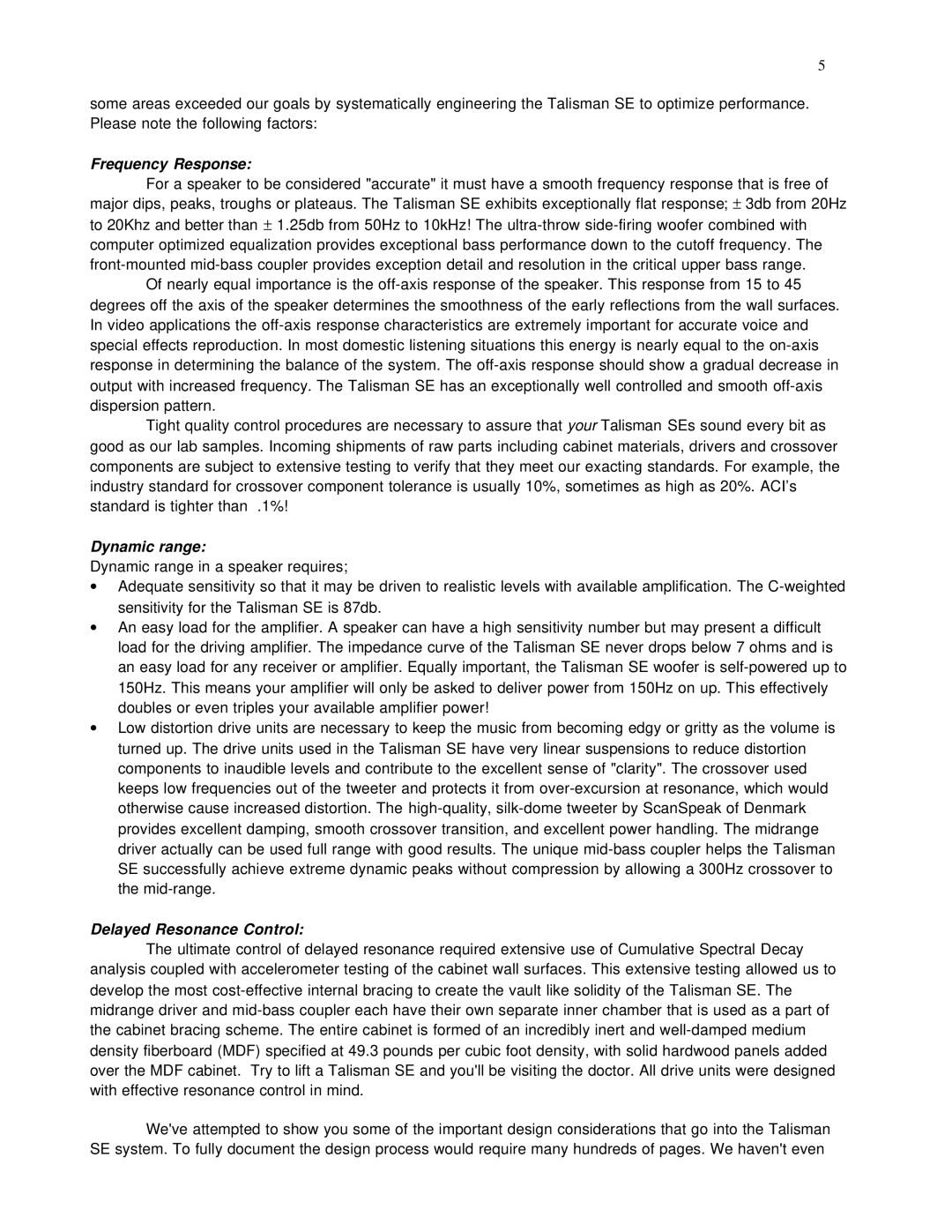5
some areas exceeded our goals by systematically engineering the Talisman SE to optimize performance. Please note the following factors:
Frequency Response:
For a speaker to be considered "accurate" it must have a smooth frequency response that is free of major dips, peaks, troughs or plateaus. The Talisman SE exhibits exceptionally flat response; ± 3db from 20Hz to 20Khz and better than ± 1.25db from 50Hz to 10kHz! The
Of nearly equal importance is the
Tight quality control procedures are necessary to assure that your Talisman SEs sound every bit as good as our lab samples. Incoming shipments of raw parts including cabinet materials, drivers and crossover components are subject to extensive testing to verify that they meet our exacting standards. For example, the industry standard for crossover component tolerance is usually 10%, sometimes as high as 20%. ACI’s standard is tighter than .1%!
Dynamic range:
Dynamic range in a speaker requires;
∙Adequate sensitivity so that it may be driven to realistic levels with available amplification. The
∙An easy load for the amplifier. A speaker can have a high sensitivity number but may present a difficult load for the driving amplifier. The impedance curve of the Talisman SE never drops below 7 ohms and is an easy load for any receiver or amplifier. Equally important, the Talisman SE woofer is
∙Low distortion drive units are necessary to keep the music from becoming edgy or gritty as the volume is turned up. The drive units used in the Talisman SE have very linear suspensions to reduce distortion components to inaudible levels and contribute to the excellent sense of "clarity". The crossover used keeps low frequencies out of the tweeter and protects it from
Delayed Resonance Control:
The ultimate control of delayed resonance required extensive use of Cumulative Spectral Decay analysis coupled with accelerometer testing of the cabinet wall surfaces. This extensive testing allowed us to develop the most
We've attempted to show you some of the important design considerations that go into the Talisman SE system. To fully document the design process would require many hundreds of pages. We haven't even
